Active and restless, Coal Tits stand apart from other members of the Tit family with their coal-gray feathers dotted with occasional white spots and dirty white bellies. The Coal Tit is a tiny feathered ball of energy.
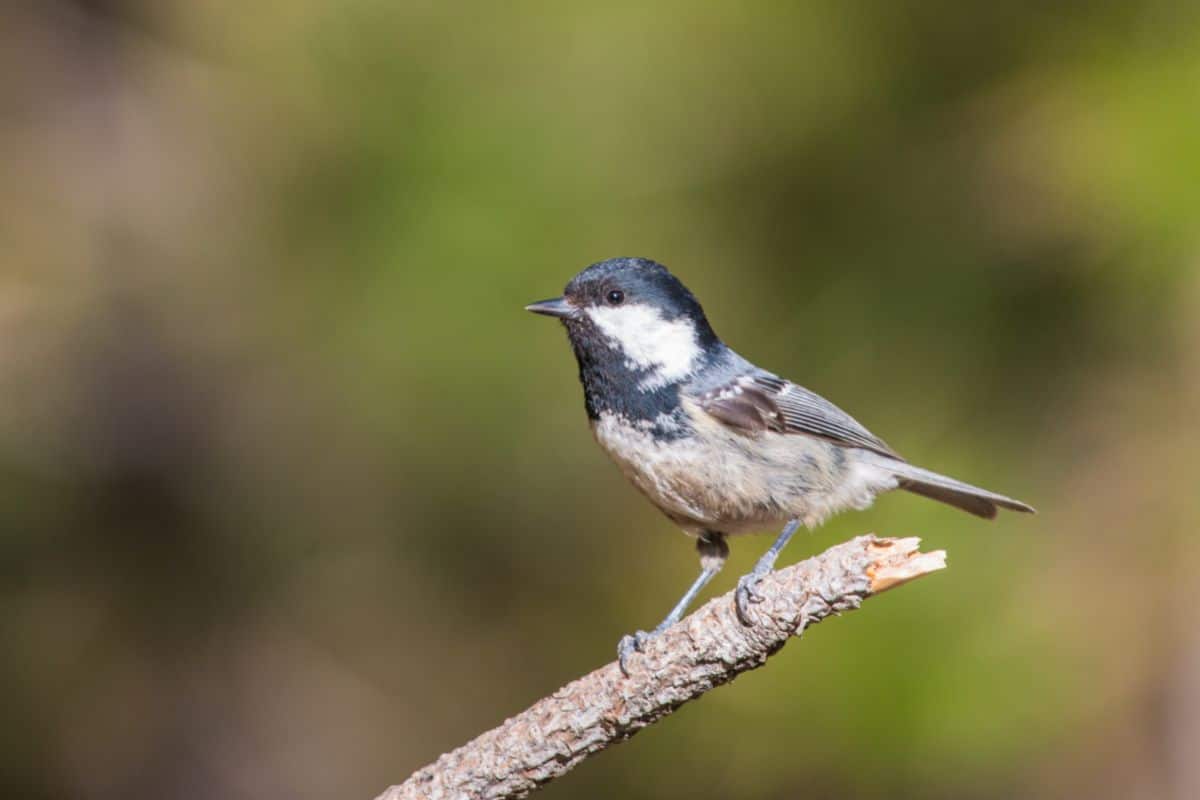
| Classification | Measurements | Life |
| Scientific Name: Periparus Ater | Length: 4.7” 12 cm | Average Lifespan: 2 years |
| Family: Tits | Wingspan: 4.7″-6.7″ 12 cm to 17 cm | When to See: Year-Round |
| Conservation Status: Least Concern | Weight: 10 g | Where to See: Europe, Asia, North Africa |
Contents
What Does a Coal Tit Look Like?
Coal Tits are common, tiny birds with a distinct appearance. The Coal Tit is a part of the Tits Family, where they all have round bodies, strong legs with long toes, and nails to pick up food. Their size limits them to pick up one seed at a time.
The Coal Tit’s name gives away the fact that Coal Tits have coal-gray wings and almost coal-smudged white and yellow bellies. Their black-feathered heads contrast deeply with their white cheeks and stripe on their neck.
When their wings spread, the inside of them has feathers lined with white stripes. The white strips emphasize the grayness. These lines create a simple, straight pattern of white and gray. It also exposes their yellowish belly even further when they fly.
The outside of their wings spread the white dots into a line and create a similar pattern of alternating between thick gray and thin white.
Compared to the other birds in their family, the Coal Tit has a very muted look. They stand out from their lack of bright, noticeable colors. The only difference between male and female Coal Tits is the additional stripe the male has on its head.
Like all birds, the Coal Tit has a distinct sound, so if you can’t tell by looking at them, you’ll know when you hear their song.
What Does a Coal Tit Sound Like?
Coal Tits have a very soft but high-pitched tweet when communicating through their call or serenading with their song. Both have distinctively different patterns, but a Coal Tit’s sound can be heard if you know what to listen for.
Coal Tit Song
The Coal Tit song is a repeated and rhythmic sound. It closely resembles the squeak of a hand pump when quickly blowing up a soccer ball or inflatable pool toy. It’s fast, can be short or long, and, most of the time, louder than a call.
Coal Tit Call
A Coal Tit’s call is much shorter and less rhythmic than their song. The Coal Tit’s call alerts other Coal Tits of their locations or if there is danger nearby, so if you hear a choppier version of their song, followed by other Coal Tits mimicking it, it’s easily notifiable as a call.
What Do Coal Tits Eat?
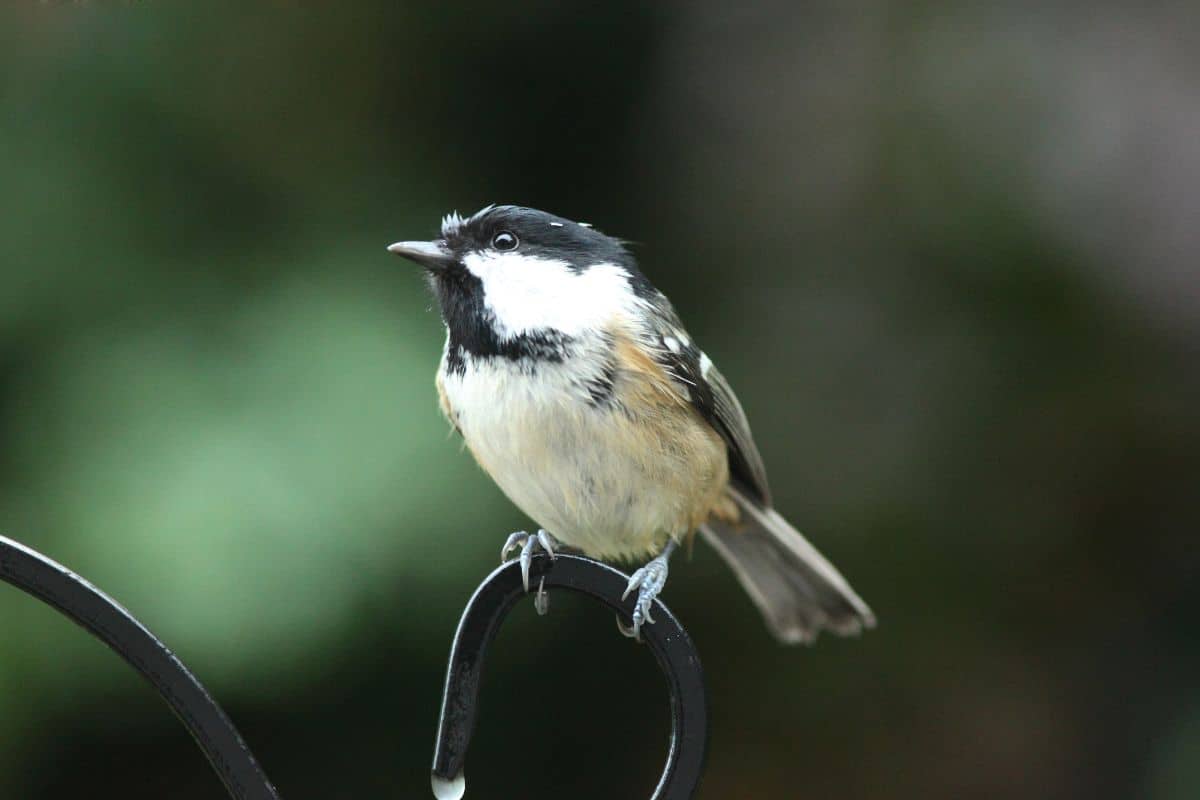
Like most small birds, Coal Tits feast on smaller objects and insects. They’re omnivores, so they eat spiders and worms they find on the ground or in trees.
Alongside eating other tiny bugs, Coal Tits infiltrate gardens and eat bird seed from feeders, sunflowers in particular, as well as nuts from trees. They aren’t very picky, although they have their preferences.
What Predators Hunt Coal Tits?
Coal Tits move around quickly and are not under any threat of going extinct anytime soon. They do, however, have some predators they look out for.
Their biggest threats are foxes and cats. Foxes are sneaky enough to find them when their nests reside in the coniferous woodlands and parks, and house cats are their biggest foes when they live in or visit gardens.
How Big Is a Coal Tit?
Coal Tits are not very big at all. They reach about twelve centimeters in length, and their wingspan measures out to a similar size, a few centimeters longer depending on how they grow.
What Is the Coal Tit’s Wingspan?
As stated, their wingspan is similar to the length of the Coal Tit and tends to range between 12 and 17 centimeters.
How Much Does a Coal Tit Weigh?
Coal Tits are very tiny creatures, so they weigh around ten grams, the same as two nickels! Their lack of weight and size is a positive in many aspects, however. They help the Coal Tit move around fast, get into tiny spaces where predators can’t get them, and pick food other birds can’t reach.
What Is the Coal Tits Latin Name?
A Coal Tits Latin name, or their scientific name, is Periparus Ater. Like all Latin names, the first word refers to the bird’s family, Paridae (Tit). Ater is what makes separates the bird from the rest and makes it the Coal Tit. The word ‘Ater’ means ‘dull black’ in Latin.
Are Coal Tits Friendly or Aggressive?
Coal Tits are rarely ever aggressive. They are, however, always moving about, and quickly at that. If you are hoping to stop by and see them at your garden’s bird feeder or bird bath, you likely won’t be able to.
These tiny birds move almost chaotically fast, so while they aren’t aggressive, they don’t leave much time for friendliness.
What Color Is a Coal Tit?
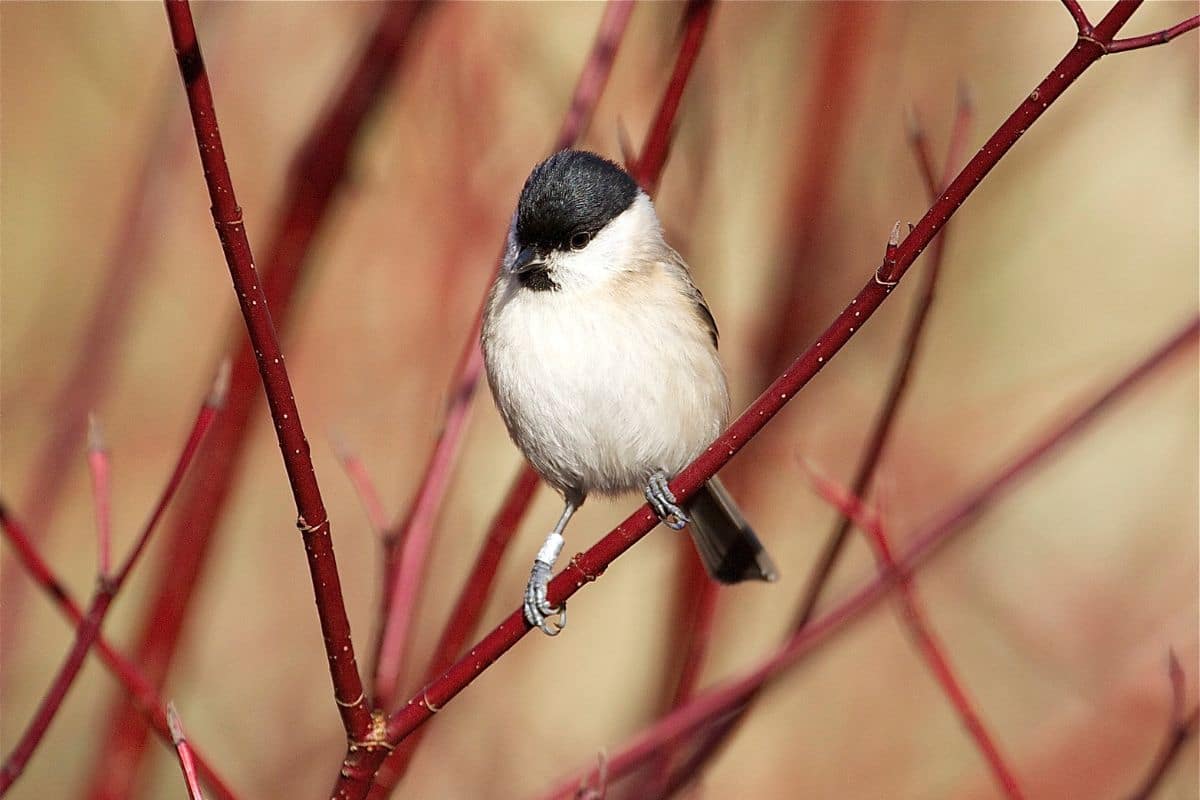
Coal Tits have a few colors, the primary one being the light gray of their wings and back. They have black, almost ink-colored, heads with white cheeks, and their bellies are a dirty white, sometimes yellow.
How Rare Is a Coal Tit?
Coal Tits aren’t rare at all. Coal Tits are extremely common birds in the United Kingdom and can be found frolicking in a garden’s bird bath, feeder, or in a birdhouse in someone’s backyard.
In Europe, their breeding population is estimated at anywhere between 13,000,000 and 27,000,000 pairs. This large population means they are classified as a least-concerned species by the International Union for Conservation of Nature (IUCN).
What Is a Coal Tit’s Lifespan?
Coal Tits live up to around two years, but this can be shortened or lengthened based on circumstance. One Coal Tit shockingly lived up to eight years, so it comes down to the individual bird.
Where Do Coal Tits Live?
Coal Tits are found in several different parts of the world, including Europe, Asia, and North Africa. Although mainly located in the United Kingdom, most Coal Tits can be found living in coniferous woodland. This includes all conifer trees, from spruce trees to pine trees.
Coal Tits utilize conifer trees to plant their nests, and their minuscule beaks and quick agility give them the ability to peck food between pine needles and other smaller spaces that larger birds wouldn’t be able to reach.
Coal Tits can also comfortably live in gardens inside birdhouses and eat seeds from bird feeders. They tend to roam between these woodlands and gardens but can live in either.
Do Coal Tits Migrate?
When it comes to migration, Coal Tits move around a good amount in the winter. While a majority ultimately stay in the coniferous woodlands, some move to thicker hedges in the farmland or to the birdhouses in gardens.
Coal Tits tend to form flocks with other Coal Tits and other Tit family birds in the winter to find food sources. Joining together helps distract from their lack of size as individuals.
Coal Tits are very good at collecting and storing food after they’ve migrated to a location for winter or nesting. Their speed and size allow for them to stock up well for the colder months.
Either way, Coal Tits move, but not very far. They stay in a general area, unlike other species that migrate to an entirely new location.
Do Coal Tits Have Mates?
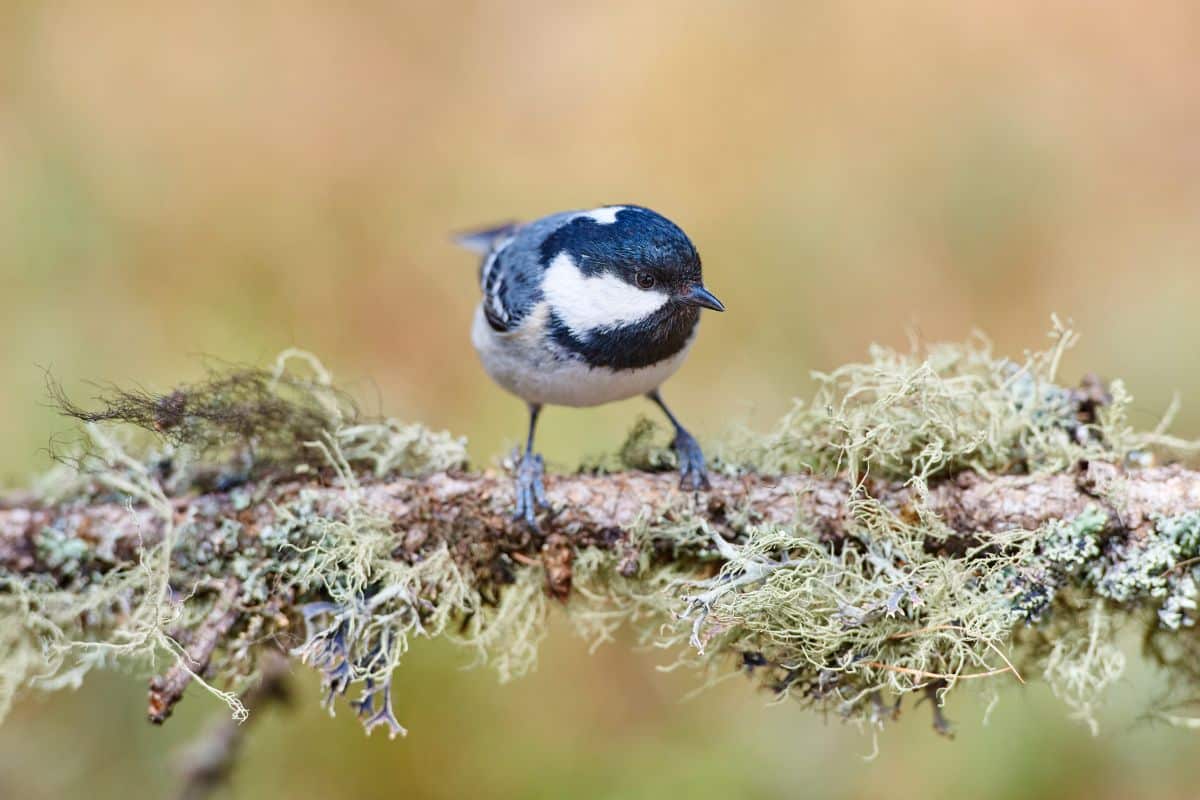
Yes, Coal Tits find mates and pair with them for life. They’re very protective of their home and babies, so mating for life with one bird keeps it easy when protecting their nests. The pair work together to feed their babies and see them off into the world.
How Do Coal Tits Breed?
Once they’ve found their mate, Coal Tits breed by nesting. The pair will find a location and stay there. The female Coal Tit incubates the eggs, and once they’ve hatched, both parents work to feed the babies, which takes around 20 days before they’re fledged.
How Do Coal Tits Nest?
Coal Tits, like most birds, use tiny sticks, grass, and other available resources to create a warm and safe space to incubate their eggs. What separates Coal Tits from other birds in their family is that they also use moss to create nests.
Moss offers extra cushioning to protect the eggs, especially with a Coal Tit that can’t seem to keep still for long. Both parents also help to feed the babies, so the moss doesn’t keep one bird from harming the babies, but two birds. The moss also offers some flexibility that sticks don’t.
Where Do Coal Tits Nest?
Coal Tits are very small, so when it comes to competing to defend their nest and finding food for their babies, they have some trouble. They nest in places that have very tiny entrance holes they can enter, but predators can’t.
This is why they prefer bird boxes or coniferous trees to make it easier on them and offer them a better chance of protecting their home.
When Do Coal Tits Nest?
Coal Tits nest in the late spring or early summer, somewhere around April and June. Once the eggs are laid, it takes a little over two weeks before they can hatch.
How Many Eggs Do Coal Tits Lay?
Coal Tits tend to lay around eight to ten eggs. They usually have two broods per year between April and June. This is typically the only time they will lay eggs for the entirety of the year.
What Do Coal Tit Eggs Look Like?
Coal Tit’s eggs are an off-white color, freckled with a mix of light and darker brown specs. The brown sometimes comes off as a reddish brown, but a majority of the egg is that white cream color.
How Long Does It Take for Coal Tits To Leave the Nest?
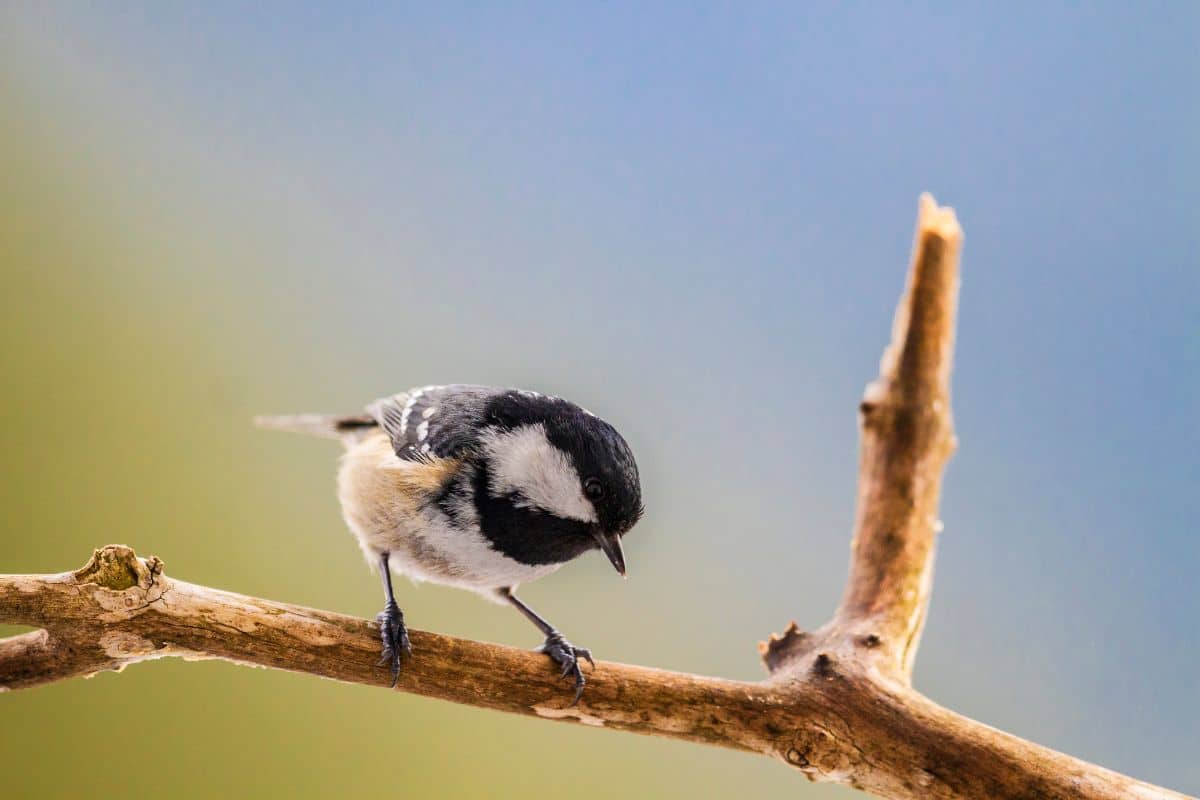
Once the eggs hatch after about sixteen days of incubation, they remain in the nest for an additional three weeks relying on food from the mother and father Coal Tit. Anytime after this period ends and the baby Coal Tits are strong enough, they’ll eventually leave the nest.
What Are Other Birds in the Tit Family?
Other well-known birds similar to the Coal Tit are the Great Tit and Blue Tit. These are the most common birds in the family.
Other birds in the Tit family include:
- Bearded Tit
- Crested Tit
- Long-tailed Tit
- Marsh Tit
- Willow Tit
What Is a Unique Fact About the Coal Tit?
If a Coal Tit is agitated, they have a small patch on the back of its head that raises its feathers. Whether they’re sensing danger or another bird is too close to their nest, it’s easy to see a Coal Tit isn’t happy when these feathers stand upright on their head.
What Is the Best Way To Spot a Coal Tit?
Based on its many characteristics, the best way to spot a Coal Tit is its appearance. The Coal Tit can be mistaken as a Marsh Tit or a Willow Tit, so knowing the definitive signs are important. These other two birds have similar shapes and colors, but a Coal Tit stands out.
The gray wings, black head, and white cheeks are definite indicators. Coal Tits are also not as plump or round as a Willow Tit, and a Marsh Tit is browner than a Coal Tit’s gray feathers. Their song and call can also give them away, but their appearance is much easier to detect.
If you want to attract Coal Tits to your yard, they particularly love sunflower seeds and peanuts. So be sure to stock your bird feeder with these treats.
Conclusion
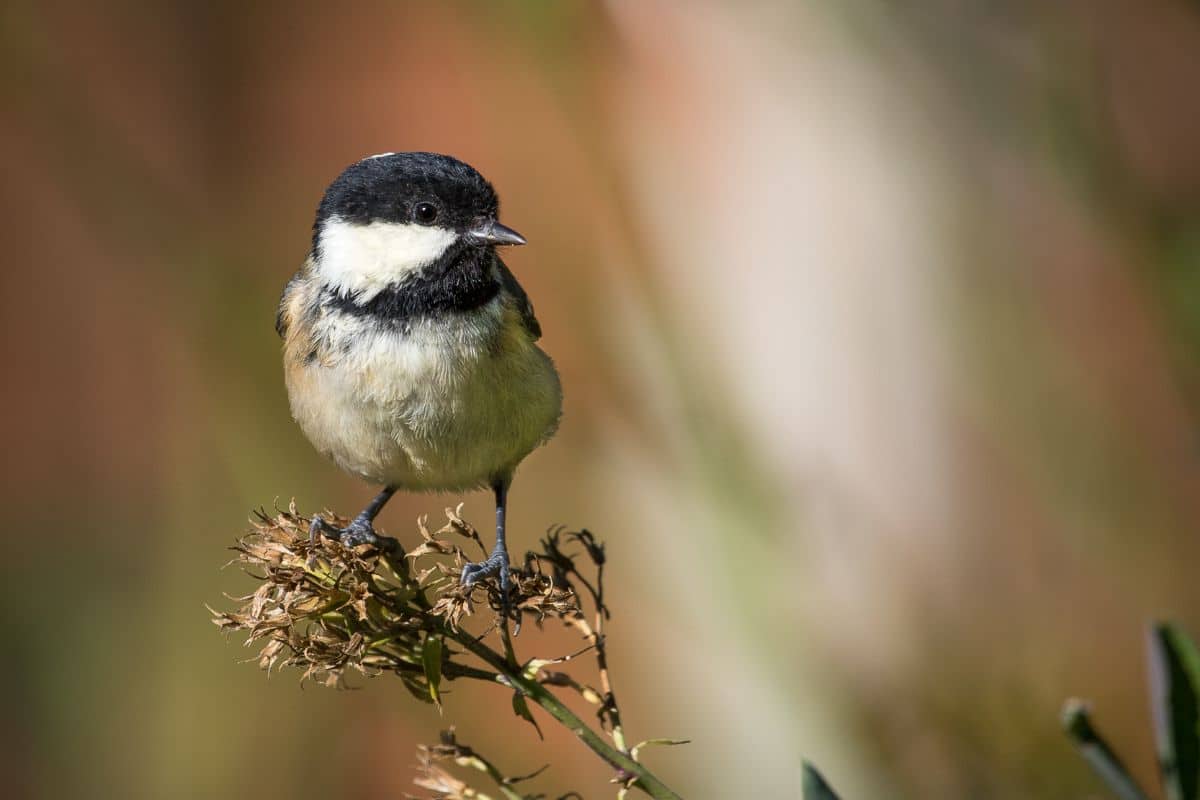
The Coal Tit is a tiny and gray-feathered bird with a lot of energy. Found in coniferous woodlands and gardens, you can spot a Coal Tit by its distinguishable features of the high-pitched, rhythmic song.
